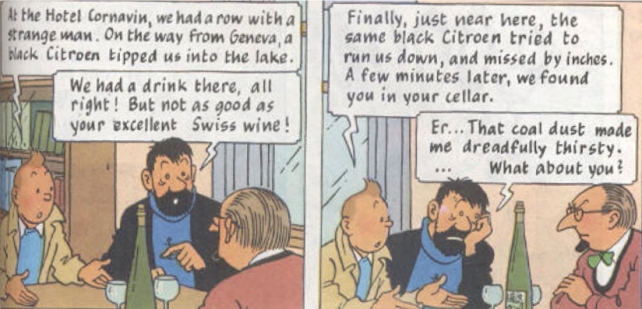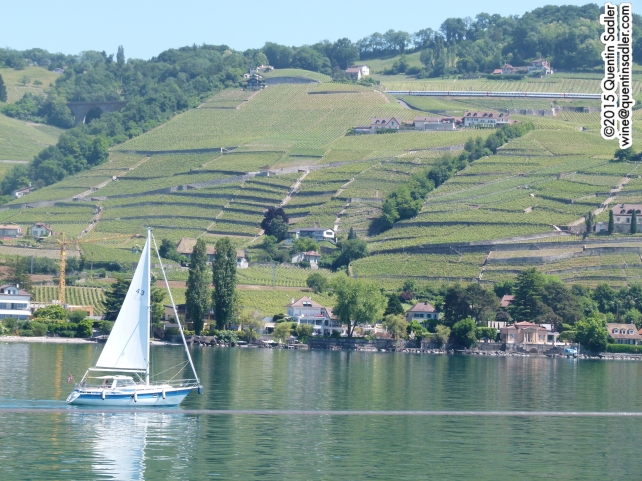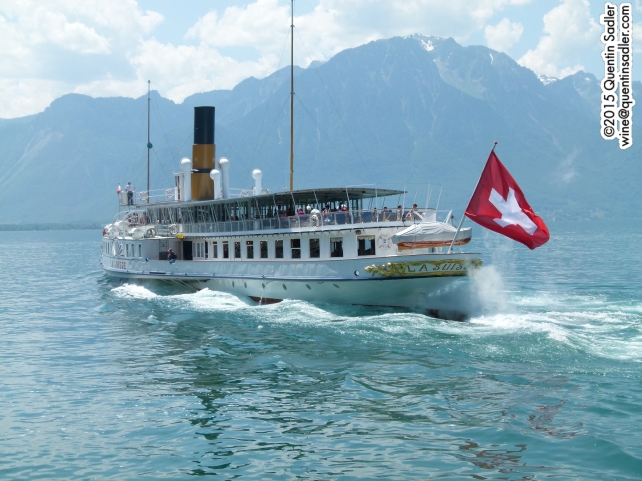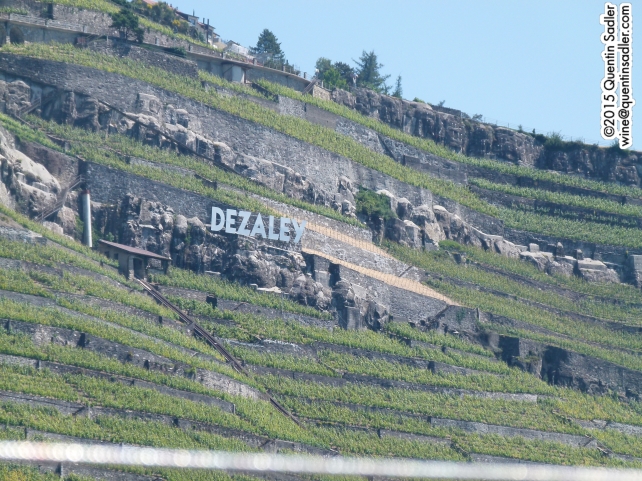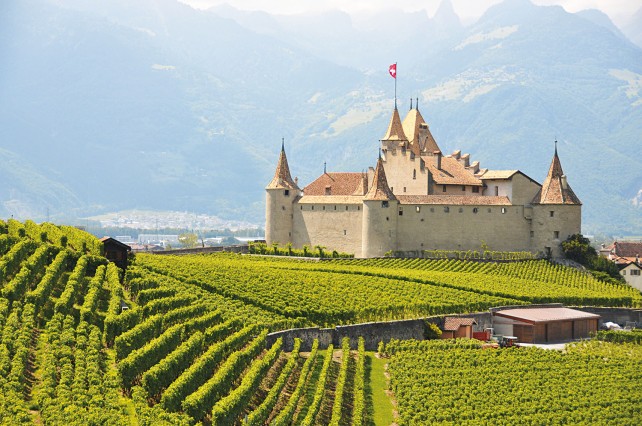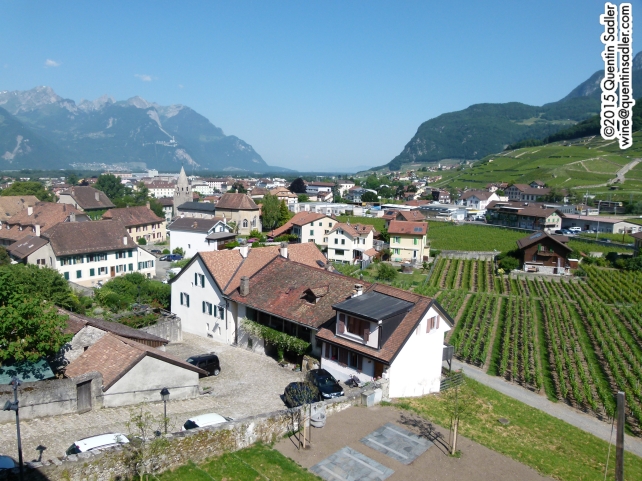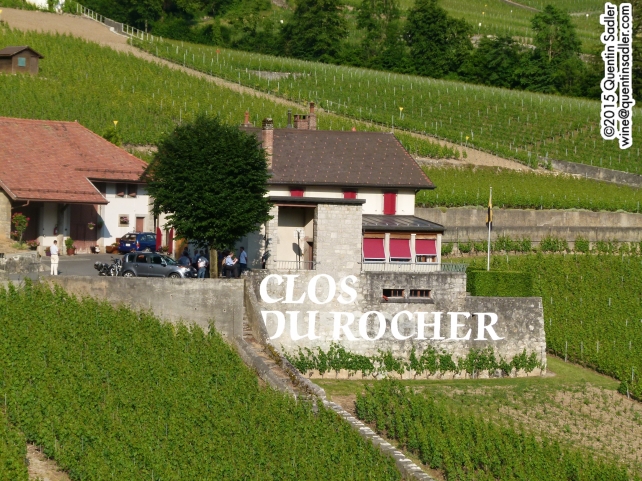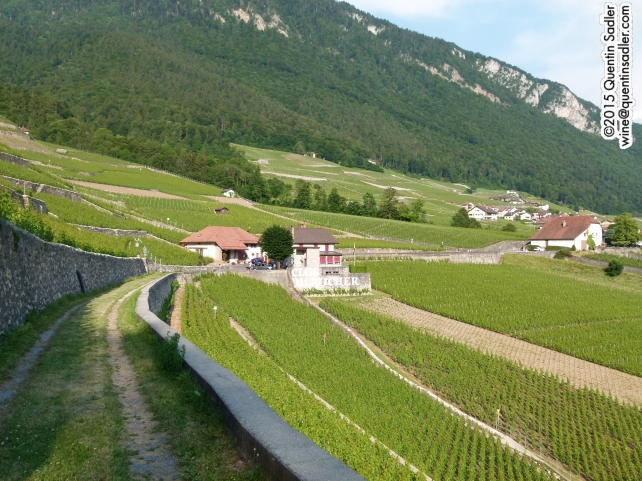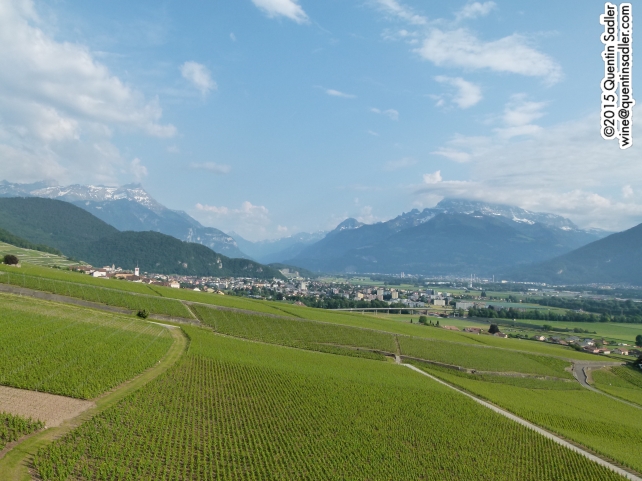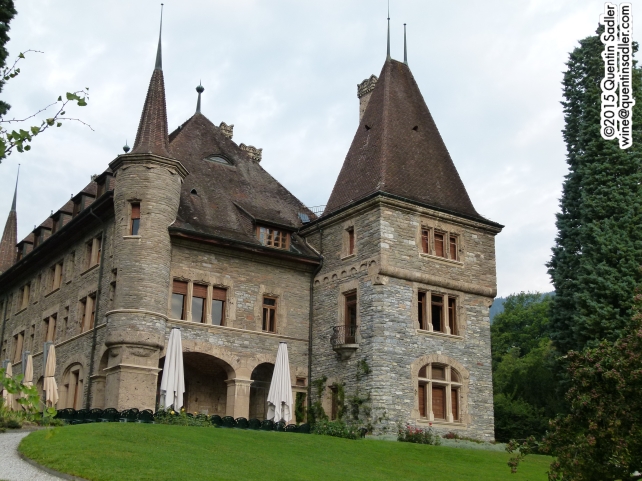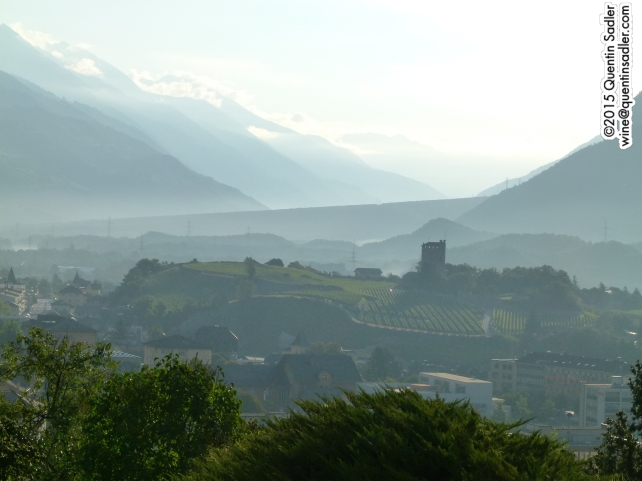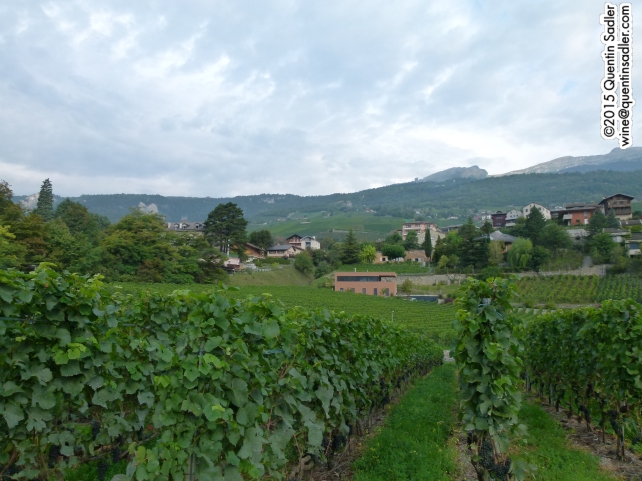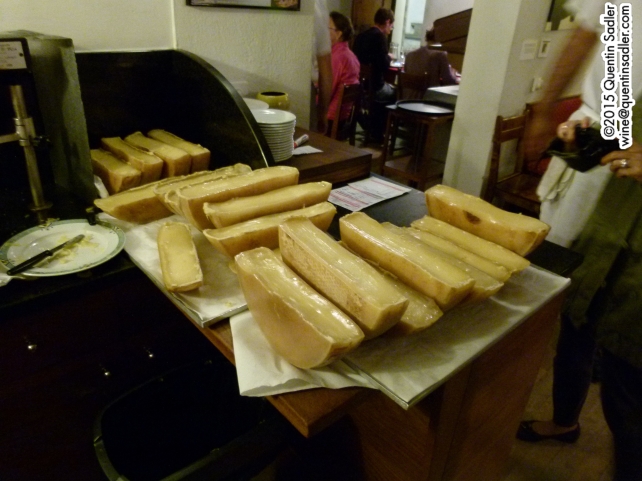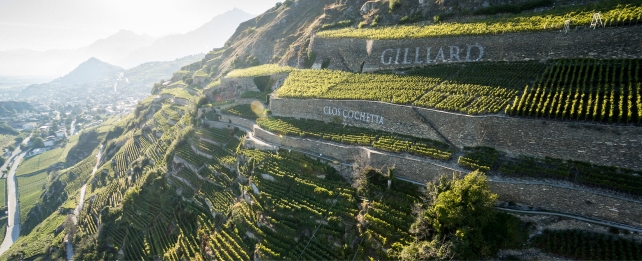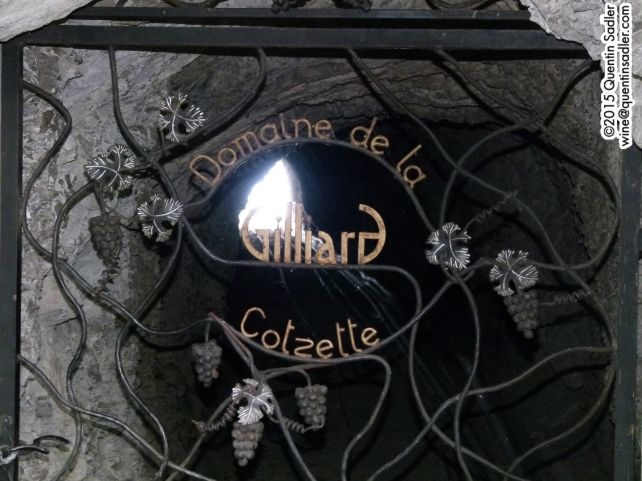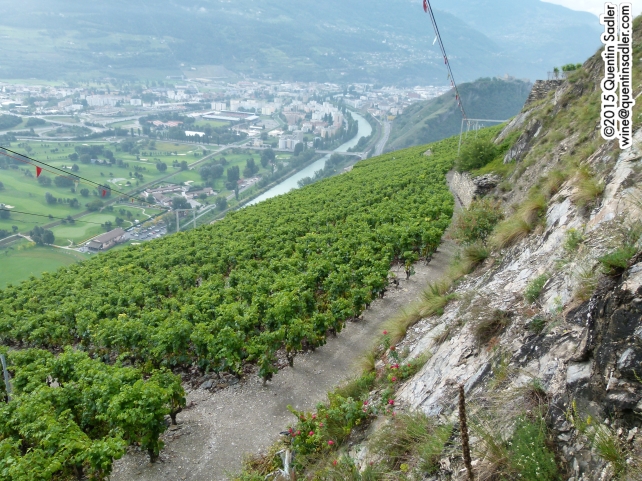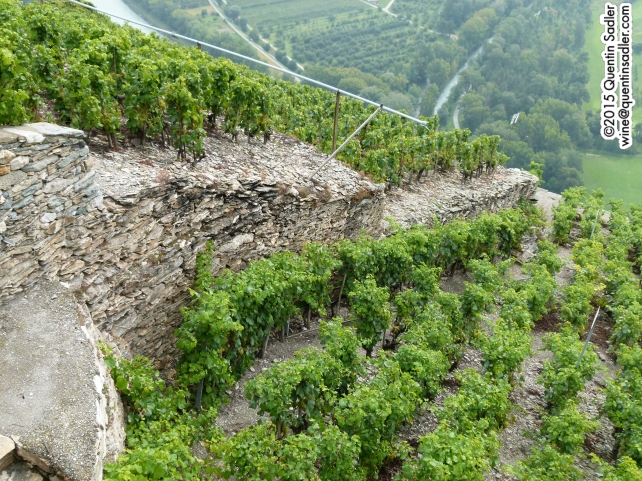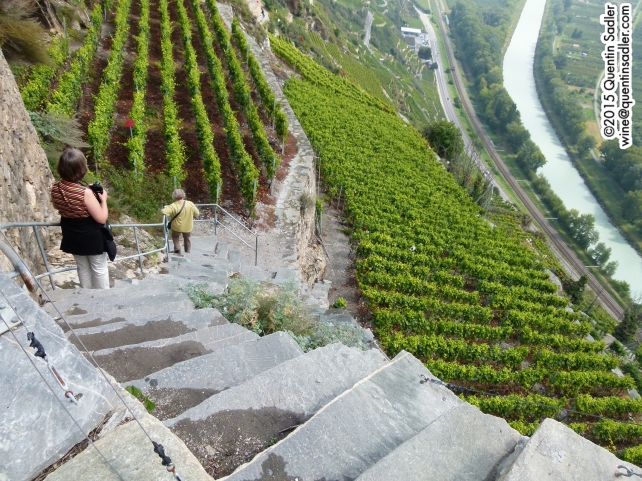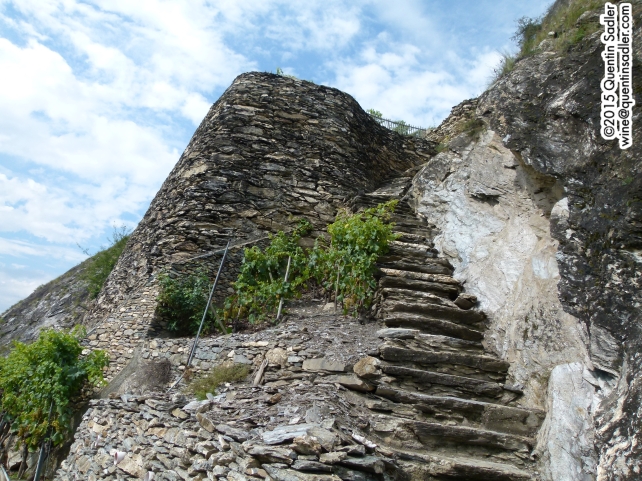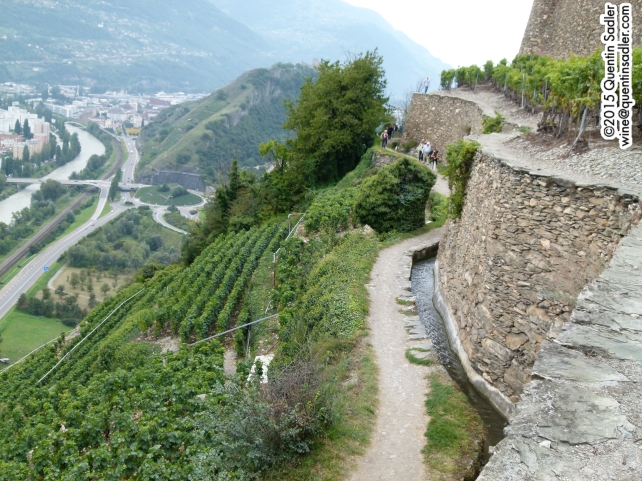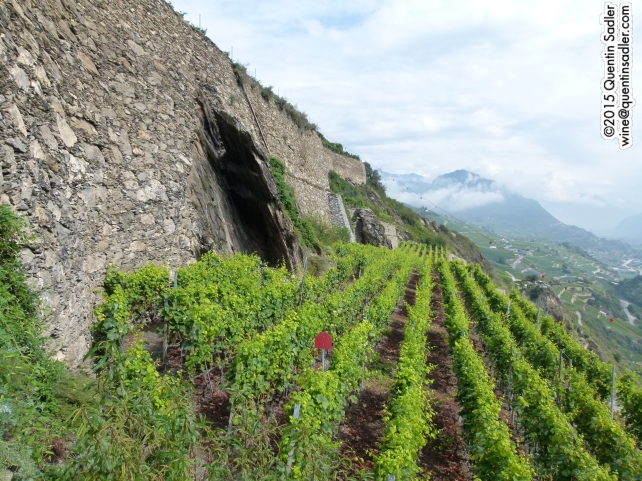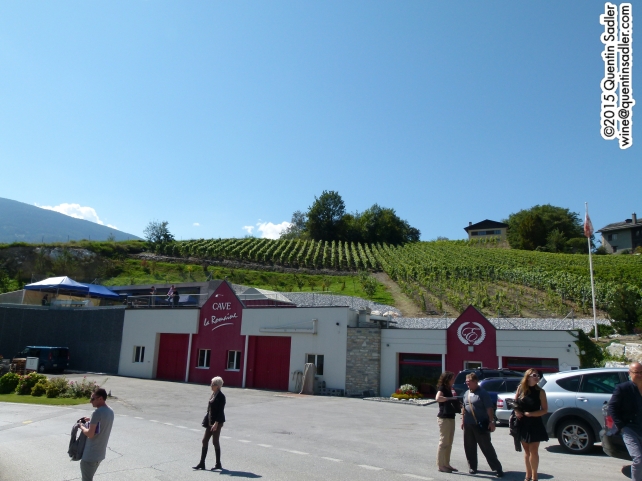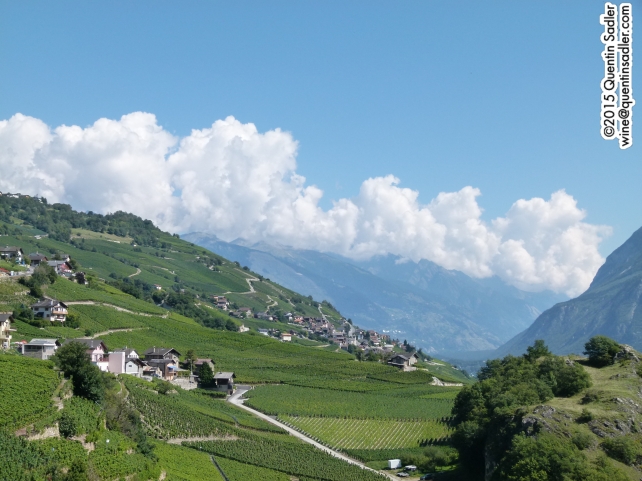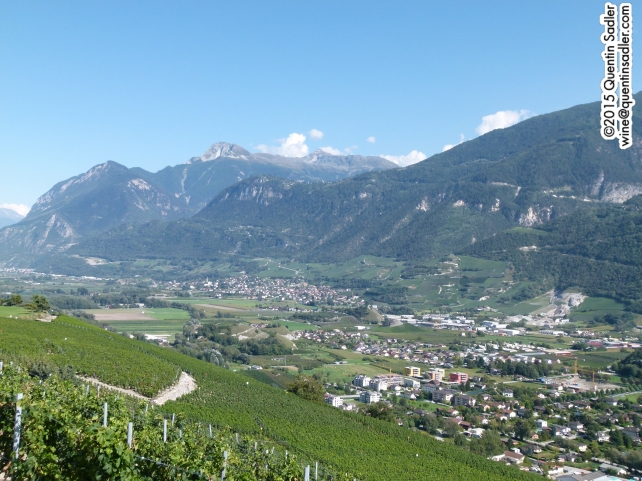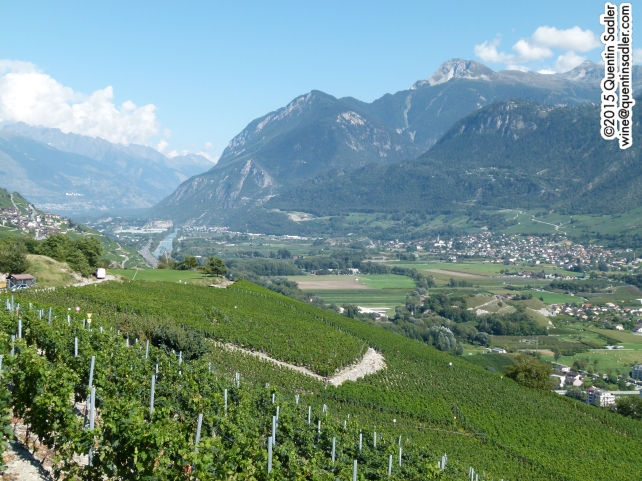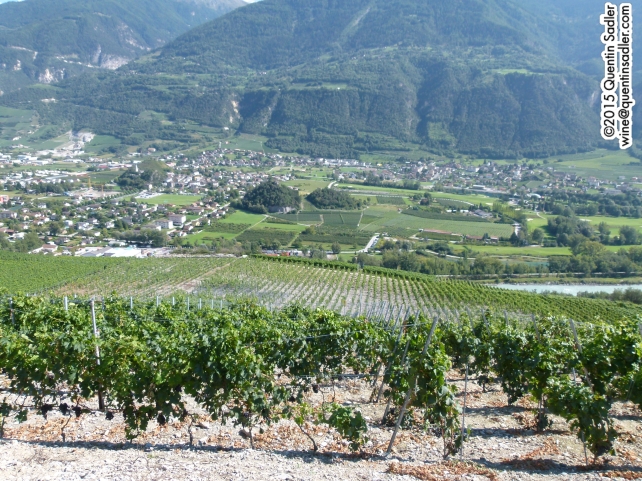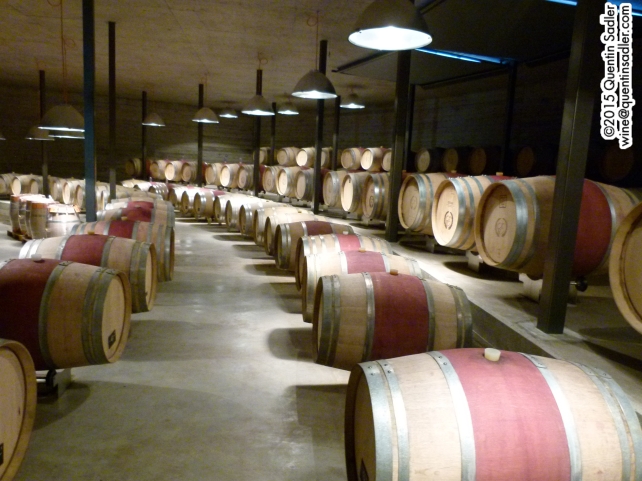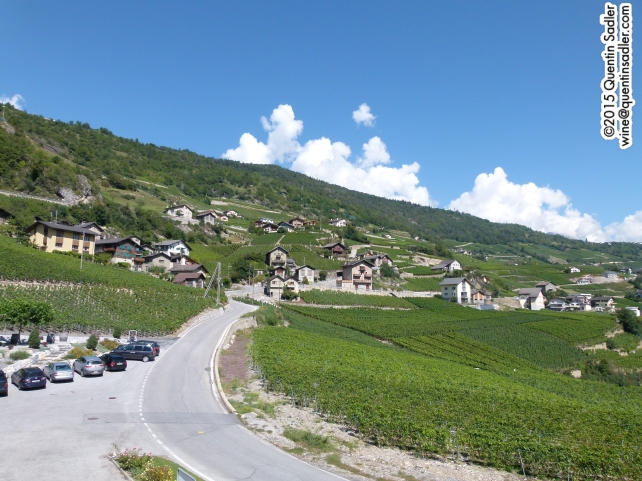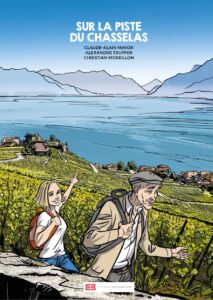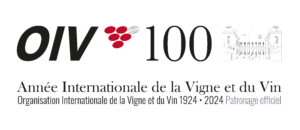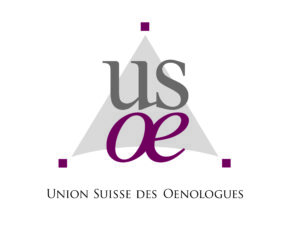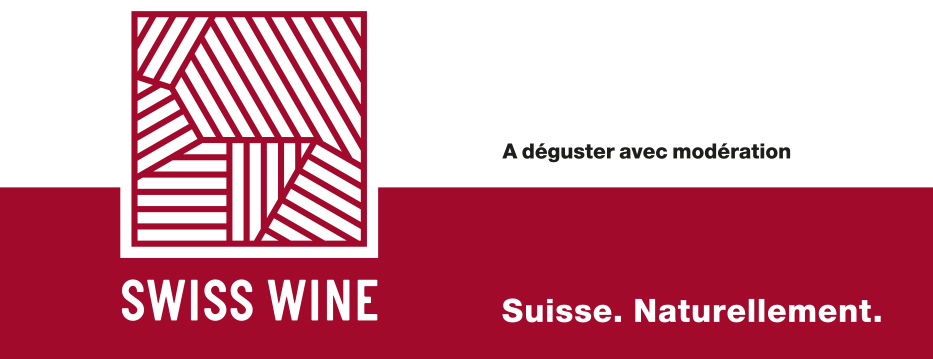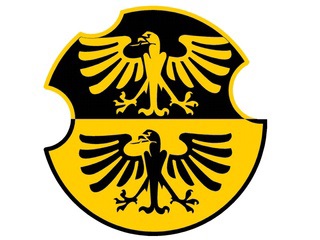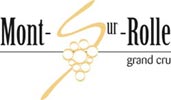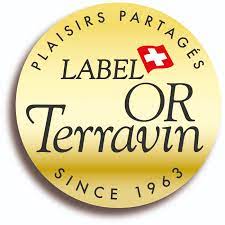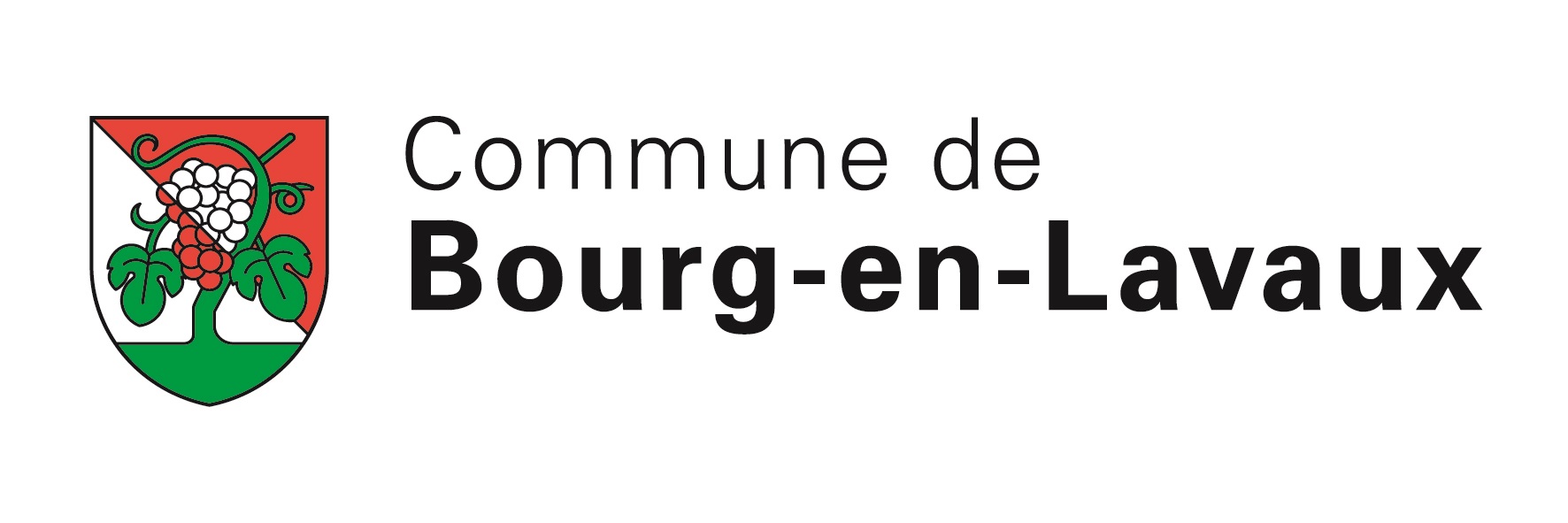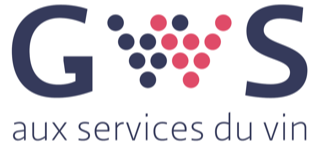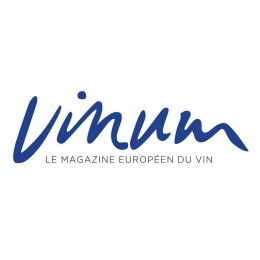The Chasselas Affair – wine travels in Switzerland
Switzerland is famous for many things; banks, mountains, neutrality, lakes, cheese, chocolate and, erroneously courtesy of Orson Wells, cuckoo clocks. Not many people, in Britain anyway, seem to associate the Alpine country with wine. Not unless they, like me, are fans of Tintin and have read The Calculus Affair very carefully indeed. I have loved this book since I was 9 – for me it is the best in the series and I could probably act it out and quote it to you from memory – and I always enjoy the scene where Captain Haddock rescues his bottle of ‘excellent Swiss wine’ from a collapsing house.
Swiss wines are a bit of a mystery to most UK wine consumers, because almost none of it is exported. The Swiss are a thirsty lot and they drink 98% of their own wine and import much more. In fact they import two thirds of what they consume, so it is hardly surprising that so little Swiss wine leaves the country – Switzerland has a mere 0.2% of the world’s wine growing area and with just 15,000 hectares in the whole country. It’s half the size of France’s Burgundy region – itself far from a large producer.
So you can begin to see why, when the Swiss thirst is taken into consideration too, Swiss wines are often very expensive. The extreme landscapes that many of the vineyards inhabit add extra costs to the already high prices.
Switzerland has incredible variety in its wine making that makes it impossible to pin it down to any one style, white wines dominate, as you might expect from the climate, but there are many excellent reds too. What’s more they grow an amazing range of grape varieties, many of which are indigenous and hardly grown anywhere else.
My visit last year stuck to the southern parts, the French and Italian speaking areas of the country, with visits in the Vaud and Valais regions (French speaking) and then a trip to Italian speaking Ticino (pronounced Ti-chino). I will tell you about that another time.
Vaud: Lavaux
On both trips my first stop was in the Canton of Vaud and I am really glad of that because the scenery is quite magical. The sheer beauty took my breath away both times.
My first ever winery visit in Switzerland was quite special. Domaine Bovy has belonged to the family since at least 1779, but it seems that the search for quality really only started in 1937 when Maurice Bovy started bottling the wines instead of selling them in bulk. Today the fifth generation, Bertrand and Eric, farm 11 hectares of the Lavaux sub-region. They also have a beautiful looking holiday apartment to let, which has got me thinking…
Lavaux is a UNESCO World Heritage Site and makes a claim to produce Switzerland’s finest wines. The vineyards here cover an amazing slope and terraces that go from 600 metres above sea level to 380, where the lake is. Just as in Burgundy the vineyard areas are divided up by the name of the village they surround, so the wines here are labelled as Lutry, Villette, Epesses, Saint-Saphorin, (the confusingly named) Chardonne and Montreux-Vevey. In addition Dézaley and Calamin are both Grand Cru, which means the wines must come from those sites and have higher sugar content than normal in the grapes at harvest. This aims to ensure the wines will be richer and rounder.
The soils are chalky limestone, which should suit Chardonnay perfectly, but around here the speciality is Chasselas. It possible that these vineyards produce the definitive style of this grape variety that is unloved pretty much anywhere except Switzerland. In fact Chasselas accounts for 80% of production and if no other grape is mentioned on the label of a white wine from Lavaux, then it is made from Chasselas.
As I have mentioned, the grape is hardly famous from anywhere else, it makes Pouilly-sur-Loire, the poor relation to Pouilly-Fumé, and is used a little in Alsace and in Germany, where it is called Gutedel, but it is not very often taken seriously anywhere except Switzerland. From my experiences it seems to be common practice to put the wines through Malolactic Fermentation, which makes the Swiss examples less thin and acidic than you might expect. In fact a great many have a very pleasing creamy quality and mouthfeel that makes them a perfect partner to cheese – lucky that, we had a lot of cheese on this trip.
Domaine Bovy have vines in Epesses, Saint-Saphorin and Dézaley and I was fortunate enough to try their Pinot Noir and Merlot, which were both excellent, as was their Chorus Saint-Saphorin dessert wine made from 90% Gewürztraminer with 10% Pinot Gris.
I was also able to taste my very first Diolinoir, which is a cross between Robin Noir (aka Rouge de Diolly) and Pinot Noir. The grape was developed in 1970 as a blending grape to improve the colours of Swiss red wines, but I tasted quite a few varietal examples and liked them all. My notes say that the Bovy Optimus was ‘complex and fascinating’ – actually it is only 80% Diolinoir with 10% each of Gamaret and Garanoir – both of which are crosses of Gamay and Reichensteiner.
Good as the other wines were though, the real joy here though was the Dézaley Grand Cru Chasselas. I tasted both the fresh, yet concentrated and gently creamy 2013 as well as the mature, mineral and honeyed 2000 vintage (sealed with screw cap by the way) which was equally, if differently, delicious and went perfectly with gruyere cheese – and the view.
In a tasting a few days later we also tasted another Dézaley Grand Cru from Domaine Louis Bovard. It was his 2013 Médinette Dézaley Grand Cru Baronnie du Dézaley and it was quite wonderful, with very delicate characters, but a solid core of concentrated fruit and a long, stony mineral finish – as I say, I do like what they do with Chasselas here and have in fact shown this wine at some tastings once I got back to the UK.
Vaud: Chablais
This year I returned to Vaud, but this time to the sub-region of Chablais, which is slightly confusing from a wine point of view. Certainly my spell checker keeps wanting to make it Chablis. What’s more I have noticed that quite a few people of a certain age pronounce Chablis as Chablais (my spell checker made those 2 the same 8 times!), including my father, so I wonder if the wines were available in the UK in the 1950s and ’60s to cause the confusion?
Anyway, this year I was based in the lovely little town of Aigle and enjoyed three mornings of wine judging in the wonderful castle, followed by wine visits in the afternoon.
My favourite visit was to Clos du Rocher in the nearby village of Yvorne, which is another Grand Cru site. Again the vineyards were a delight, this time on more gentle slopes on the south eastern shore of the lake, so not as dramatic, but still very beautiful.
Again Chasselas was the star grape and me and my colleagues were treated to a fascinating tasting of their Clos du Rocher Grand Cru Yvonne, Chablais AC from the 2014 vintage – so delicious that I bought some – back to the 1982. All were still fresh and lively, although the older examples had developed a more golden colour and dried fruit and mushroom character. What’s more every vintage since 1990 was sealed with screwcap.
On the last day of judging, just before I took the train back to Geneva Airport, I visited Bernard Cavé Vins. The wines here were very modern, with beautiful packaging and attention to detail, but sadly I could not carry any more bottles back – quite a good thing really as Easyjet managed to break all the bottles in my case, and you were thinking this trip sounded glamorous up to that point weren’t you!
All Bernard Cavé’s Chasselas wines were superb, notably the exquisite Clos du Crosex Grillé Cuvée des Immortels Reserve Aigle Grand Cru. Fermented in concrete eggs, this was textured, round and silky too. In the unlikely event that you tire of his Chasselas, his Marsanne – called Ermitage locally – was stunningly rich, concentrated and fine – as well as downright delicious.
On my two trips to Vaud I was very impressed by a good many of the wines, but it was the Chasselas that really pleased me. The individual wines varied of course, but they had a drinkability that was impressive. They were never thin and overtly acidic, instead the acidity was balanced by some weight and they had a delicate creamy quality, good concentration and minerality. As I put it in one of my notes they were capable of being both ‘rich and breezy’, which makes them a lovely style of wine that I enjoy very much.
Valais
After our sojourn in Lavaux – we are back on last year’s press trip, we headed off to the Canton of Valais which is south and east of Lac Léman. The river Rhône empties into the lake, very near Aigle, but before that it bisects the Canton of Valais, turns through a 90 degree angle to the north west and for a while forms the boundary between the Vaud and Valais Cantons. Surprisingly it rises not that far from the source of the Rhine – amazing the difference one letter makes, I wonder if there is a linguistic relationship?
We stayed just outside the town of Sierre in a wonderful early twentieth century mansion called Château Mercier, it is surrounded by vineyards and quite beautiful. I loved my early morning walks through the vines.
While here we participated in the VINEA Swiss Wines Fair, when producers set up stalls in the centre of Sierre that enables people to go from on to the other tasting, drinking and buying wine – it is a lot of fun and a great experience.
Our first day was rounded off with another great experience, an evening of Raclette, my first one ever. It is a simple dish of melted cheese served with whole, firm boiled potatoes, pickles and ham and like most simple traditional fare it’s delicious. Our Raclette was quite special and consisted of five different cheeses from different different villages. Each one was progressively more mature and so stronger in taste. The cheeses were Orsières, Les Haudères, Vissoie, Simplon and Gomser 55.
While in Sierre we had various tastings that enabled us to taste all sorts of wines, even from other regions of Switzerland. Two of these were a bit odd and contrived. In one our hosts matched Pinot Noirs with perfumes that they thought went with each wine. The second took place in the Fondation Pierre Arnaud, which is an amazing gallery specialising in ethnic and surreal art. The curators had paired wines with objects from the collection, which was all very strange and subjective, but the wines were good and very interesting – as were some of the exhibits.
My highlights from these tastings were, for the whites:
2013 Petite Arvine Maître de Chais from Provins in Sion, Valais – Provin are Switzerland’s biggest producer, but this was a classy wine with lots of citrus fruit and a fleshy, creamy texture and a feeling of purity about it, like a mountain stream.
2013 Petite Arvine from Philippe & Véronyc Mettaz in Fully on the banks of the Rhône. These were my first two Petite Arvignes, I had never even heard of it in fact, but wow what a lovely grape it is. It has something of the freshness and vivaciousness of Grüner Veltliner and Albariño about it, but often with more salinity, so giving tension, and fruit (especially grapefruit), moderate acidity and a silky quality to the texture. I totally fell in love with this grape.
Petite Arvigne is an old indigenous vine from the Valais region, records show it has been farmed here since around 1600. While it is not really grown any where else, I have tasted one excellent French example from the Languedoc region made by Domaine la Grange de Quatre Sous (available here) and know that it is widely grown in the tiny Italian region of Valle d’Aoste, which is just over the border in Italy and also claims the grape as their own.
And the reds:
2012 Lampert’s Sélection Maienfelder Pinot Noir from Weingut Heidelberg in Maienfeld, Graubünden which is in the German speaking zone near Davos in Switzerland’s dramatic Rhine Valley. This is a very successful Pinotwith good weight of fruit, a nice dusting of spice and appetising tannins. All in all it was very elegant and seductive with a refined and silky mouthfeel.
2011 Hohle Gasse Grand Cru Pinot Noir from Jauslin Weine in Muttenz near Basel. This was beautifully concentrated, rich and rounded with lots of sweet ripe fruit and fragrant spice – really delicious, elegant and fine.
2011 Pinot Noir Barrique Cuvée Pur Sang from Domaine de Chambleau near Neuchâtel on the north shore of Lac de Neuchâtel – which is a French speaking area. Again this was a sumptuous style of Pinot with rich fruit, tobacco and smoke as well as silky tannins and good weight – all three of these were world class.
Two Great Winery Visits
Whilst in Valais I experienced two extraordinary visits that were truly memorable.
The first one was to Robert Gilliard in Sion and I have never seen anything like it. Their vineyards line the bank of the Rhône river on incredibly steep slopes that are kept workable by dry stone walls, some of which are 65 feet high, the highest in the world I was told. To get to these we were driven up and up into the mountains before debussing at the entrance to a short, narrow tunnel. At the other end of the tunnel we found ourselves on one of the terraces formed by the stone walls we had seen earlier. The views were breathtaking and I could not get enough of them. In the distant past all the grapes had to be taken to the winery through the tunnel, then in the twentieth century a cable car system was adopted, while nowadays a lot of the work is done by helicopter, which gets the grapes to the winery while they are still fresh and in perfect condition.
The vineyards were utterly gorgeous, which boded well for the wines – or so I hoped. Good vineyards produce good wines and this was no exception. Robert Gilliard obviously have great attention to detail, the vines are immaculate, the packaging of their wines is superb and the wines themselves were really delicious and well made.
We focussed on Robert Gilliard’s premium wines from these steep vineyards, they call the range Les Grands Murs:
Whites:
2013 Clos de Cochetta Fendant AC Valais – Chasselas is called Fendant in Valais – is a gently creamy, softly acidic, grapefruit and stone fruit flavoured wine with some salinity and minerality. It is vibrant, lightly textured, elegant and classy – I loved it.
2012 Clos de Cochetta Petite Arvine AC Valais was a little bit more acidic, more taut and less soft. It was beautifully aromatic, floral and citrus with some peachy fruit too. The finish was mineral, saline again and very focussed and pure – a great wine.
Red:
2012 Clos de Mont Diolinoir AC Valais – if we had carried on walking long the terraces from the Clos de Cochetta we would have come to the Clos de Mont, which is a hotter site which favours reds. This Diolinoir has no oak, which clearly suits the grape very well, as this gives lots of pleasure. It is brimming over with juicy blackberry fruit, a touch of spice and fresh, balancing acidity.
The second really memorable visit was to Cave la Romaine and Clos de Tsampéhro.
Joël Briguet owns Cave la Romaine, his family’s winery and in partnership with Christian Gellerstad, his old army buddy, Vincent Tenud and Emmanuel Charpin he also runs Clos de Tsampéhro, which aims to only produce the very best wines from blends of grapes. It shares facilities with Cave la Romaine, but has its own specifically planted vineyard on a three hectare site at about 600 metres above sea level.
So, it looked stunning, what about the wines? Would’t you know it, they are good too. They only make three wines, a sparkling, a white and a red and they are all blends, which is relatively unusual in Switzerland, where single varietals are much more normal:
Tsampéhro Brut – 40% Chardonnay, 35% Pinot Noir and 25% Petite Arvine, fermented in oak barrels and aged for 36 months on the lees. This is finely textured with a persistent and fine mousse, rich flavours and refreshing acidity that all makes it very elegant and very fine.
2011 Tsampéhro Blanche – 70% Heida and 30% Rèze, fermented in oak casks and aged on the lees for 18 months. A great wine, full of personality and charm, with wonderfully integrated oak giving nuances of vanilla and pine nuts, rich intense fruit with fig, plum and pineapple and a bracing cut of acidity.
Heida is the Swiss name for the Savagnin, of Jura fame – where it often makes the Sherry-like Vin Jaune. Rèze is an even lesser known grape that originates in Valais and strangely enough is traditionally used to make a Sherry-like wine, the traditional Valais speciality Vin des Glaciers.
2011 Tsampéhro Rouge – 45% Cornalin, 30% Merlot, 13% Cabernet Sauvignon and 12% Cabernet Franc, aged 24 months in French oak barrels. This is certainly a fine red, but right now the oak really dominates, although you can sense the concentrated fruit lurking beneath and it does slowly open up in the glass. I would love to taste it again in 5 years.
Cornalin is not to be confused with the Cornalin D’Aoste (Humagne Rouge), but is a grape known rather vaguely as Rouge du Pays – rather like Spain’s Tinta del Pais – until 1972, when it was awarded the Cornelian name as that grape had pretty much died out, so an Italian bottle labelled Cornalin D’Aoste and a Swiss wine labelled Cornelin are not made from the same grape, despite being only 30 miles or so apart – phew!
Impressed as I was by the Tsampéhro wines, I also greatly enjoyed the wines of Cave la Romaine:
Whites:
2013 Petite Arvine Castel d’Uvrier Cuvée des Empereurs Cave la Romaine, A.C. Valais, was one of my favourite examples of this delicious grape, Castel d’Uvrier is the vineyard in case you were wondering. I actually wrote that ‘this sings’ with grapefruit aromas and a slightly herbal, mineral and saline finish, ‘a joy’ – I think I liked it, I certainly drank a lot of it with lunch.
2013 Humagne Blanche Réserve Castel d’Uvrier Cuvée des Empereurs Cave la Romaine, A.C. Valais, Humagne Blanche is another grape that originates in Valais, records show it has been here since 1313 and today there are only 29 hectares of it left in the world. It is a richer grape than Chasselas and Petire Arvigne, with more neutral fruit, so suits oak very well and this was barrel fermented and aged for 6 months in 3 and 4 year old barrels. It did not undergo malolactic fermentation, which keeps the acidity fresh. The nose offers heather, honey, beeswax and herbs, while the palate is both fresh and rich with a Marsanne-like quality. That fresh acidity cuts through the herbal and oily richness making it beautifully balanced and delicious.
Red:
2011 Diolinoir Réserve Cuvée des Empereurs Cave la Romaine, A.C. Valais, again this was one of my favourite examples of this grape, it was very drinkable and I kept returning to it over lunch. In fact I liked it so much I bought the last magnum in existence and I am looking at it now!
I really enjoyed these two trips to Switzerland, my only previous visit to Switzerland had been a hurried affair while I was Interrailing in the early 1980s and so these chances to see much more of the country were really exciting. The sheer variety that I discovered in Switzerland was surprising. Lots of Chasselas for sure, but also lots of other unexpected white grape varieties, some of which I had never heard of before. There reds were a real discovery too, there were lots of delicious red wines, not just the ones that I have mentioned, I tasted good Gamays and marvellous Merlots as well as the more unusual indigenous grape varieties. I learned a lot about the regions and their grape varieties, but the best thing was seeing those magical vineyards, to take in the views, meeting the producers and tasting a wide range of the wines that Switzerland produces. I came away with a very positive view of Swiss wine, the quality seemed to be very high and the styles fascinating.
Next time someone offers you Swiss wine, grab the chance, there are so many good things to try.
Quentin Sadler post edited on Quentin Sadler’s wine page on the 12 october 2015
Category: Le Chasselas aujourd'hui, Mondial du Chasselas 2015


